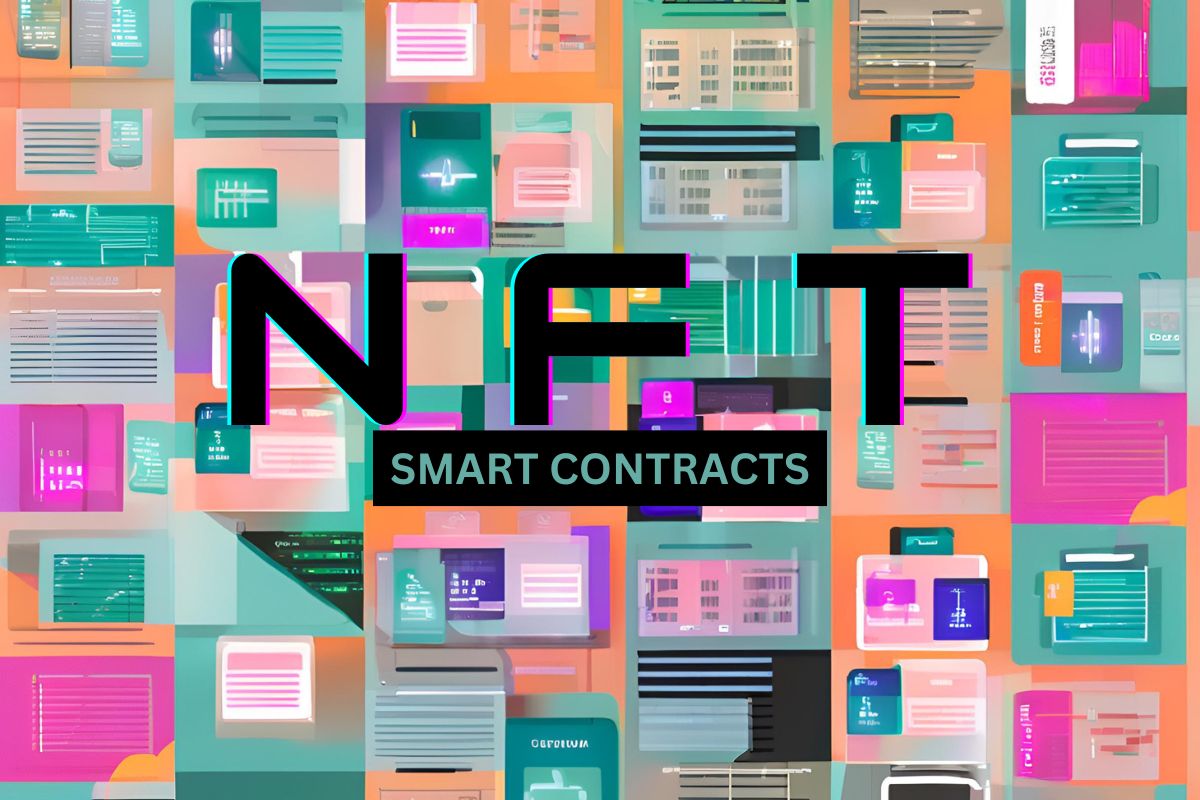If you’ve spent time in the NFT space, you’ve probably heard the term “smart contract.” But what does it actually mean? And why is it so important for NFTs?
Behind every NFT is a smart contract—an invisible engine that powers how digital ownership, royalties, and transactions work. It’s what makes NFTs more than just pictures on the internet. Whether you’re a collector, creator, or just getting curious, understanding smart contracts gives you a better view of how NFTs operate.
What This Article Covers
This article breaks down NFT smart contracts in a clear and approachable way.
You’ll learn what a smart contract is, how it connects to NFTs, what features it controls, and why it matters to artists, buyers, and developers. Whether you’re minting your first NFT or trying to understand what happens behind the scenes, this is a good place to start.
What Is a Smart Contract?
A smart contract is a piece of code stored on a blockchain. It automatically runs actions when certain conditions are met.
Unlike traditional contracts that require signatures, lawyers, or paperwork, smart contracts are self-executing. Once set up, they work on their own. This means no third parties are needed to enforce rules or carry out transactions.
For example, if you buy an NFT on a marketplace, the smart contract handles the sale. It checks if the buyer has enough crypto, moves the NFT to their wallet, and sends funds to the seller—all in one automated process.
How Smart Contracts Connect to NFTs
When someone mints an NFT, a smart contract is created or called to manage that NFT. This contract records key information like:
- Who created the NFT
- The owner of the NFT
- The rules for transferring it
- Royalty percentages
- Metadata or traits linked to the NFT
Once the NFT is on the blockchain, this data stays connected to it. Every time the NFT is sold or transferred, the smart contract helps enforce the rules it was programmed with.
Without smart contracts, NFTs wouldn’t function the way they do. You could still have digital art, but not a secure, trackable way to own, buy, or sell it.
What Smart Contracts Can Do
Smart contracts give NFTs their unique features. Here are a few of the most common:
Automatic Royalties
One of the biggest advantages for creators is the ability to receive royalties automatically. Every time the NFT is resold, a percentage of the sale goes back to the original artist. This is built into the contract from the start.
Not all platforms enforce royalties the same way, but the smart contract gives creators a tool to define what they deserve long-term.
Ownership Verification
Because the blockchain is public, anyone can verify who owns an NFT at any time. The smart contract keeps track of ownership changes so there’s no confusion or dispute.
Access Control
Some NFTs are used for more than art—they act as keys to exclusive content, events, or digital spaces. A smart contract can check if a wallet holds a certain NFT and grant or deny access based on that.
Limited Supply
If a creator only wants to mint 100 versions of an NFT, the smart contract can enforce that limit. Once the set number is reached, no more can be created.
This keeps scarcity real and trackable.
Popular NFT Standards
Most NFTs use standardized smart contracts. These standards make sure NFTs can work across platforms and wallets.
Two common standards on Ethereum are:
- ERC-721: The most common standard for single, unique NFTs. Each token is different and holds its own data.
- ERC-1155: A flexible standard that allows both unique and batch-mint NFTs. It’s useful for games or collections where some items are the same.
These standards act like blueprints. They tell wallets and marketplaces how to read, transfer, and interact with NFTs.
Who Writes Smart Contracts?
Smart contracts are usually written by developers using programming languages like Solidity (on Ethereum). But not every NFT creator needs to code.
Many platforms now offer tools that help you launch NFTs with built-in smart contracts—no coding required. These contracts often come with default features like royalty splits and metadata hosting.
Still, for more advanced uses, having a custom smart contract can help. This might include unique minting mechanics, timed releases, or interactive features.
Risks and Limitations
Smart contracts are powerful, but they’re not perfect.
Once deployed, most smart contracts can’t be changed. If there’s a mistake in the code, it could cause problems like lost funds or locked NFTs.
That’s why developers test contracts carefully before launch. Some also hire independent auditors to review the code and make sure it’s secure.
Another challenge is compatibility. A contract that works on Ethereum might not work the same way on Solana or Polygon. Different blockchains use different coding standards.
Why Smart Contracts Matter
For creators, smart contracts offer more control and transparency. Artists can set royalties, define scarcity, and build trust with their audience.
For collectors, smart contracts offer security. You can verify authenticity, track ownership, and trust that transactions follow the rules.
For developers, smart contracts open the door to creativity—games, experiences, and tools that wouldn’t be possible without automation.
Smart contracts are what turn digital items into digital assets. They make NFTs programmable, secure, and interactive.
The Building Block of the NFT Ecosystem
NFTs aren’t just about art or hype—they’re about what’s possible when technology meets ownership. Smart contracts are the foundation that makes this possible.
They don’t just move files. They create rules, automate trust, and connect creators to communities in new ways. Whether you’re here to collect, create, or build, understanding smart contracts is a key part of understanding the NFT world.

No Responses